Experts explain how the Brazilian wildfires became so devastating and what can be done to save the rain forest
"Lungs of the World" and its millions of species are at risk of harm.
The eyes of nations around the globe are currently focused on the Amazon rain forest in Brazil, where wildfires are wreaking so much havoc that the smoke has been visible in cities up to a thousand miles away and even from space.
Brazil's National Institute for Space Research reports that the number of wildfires in the country has risen more than 84% from last year. More than half of the wildfires, about 77,000 this year as of Tuesday, have been in the Amazon region, The Associated Press reported.
The rampant devastation of the rain forest, which houses millions of species of plants, animals and insects and creates oxygen while dissipating greenhouses gases and carbon dioxide, has left the world wondering how -- and why -- the fires are starting.
PHOTOS: The burning Amazon rainforest
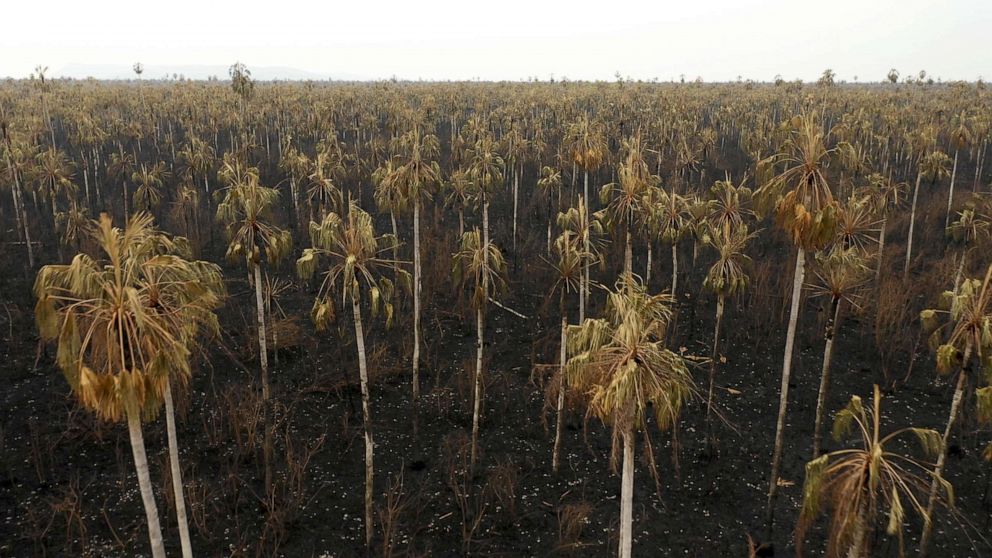
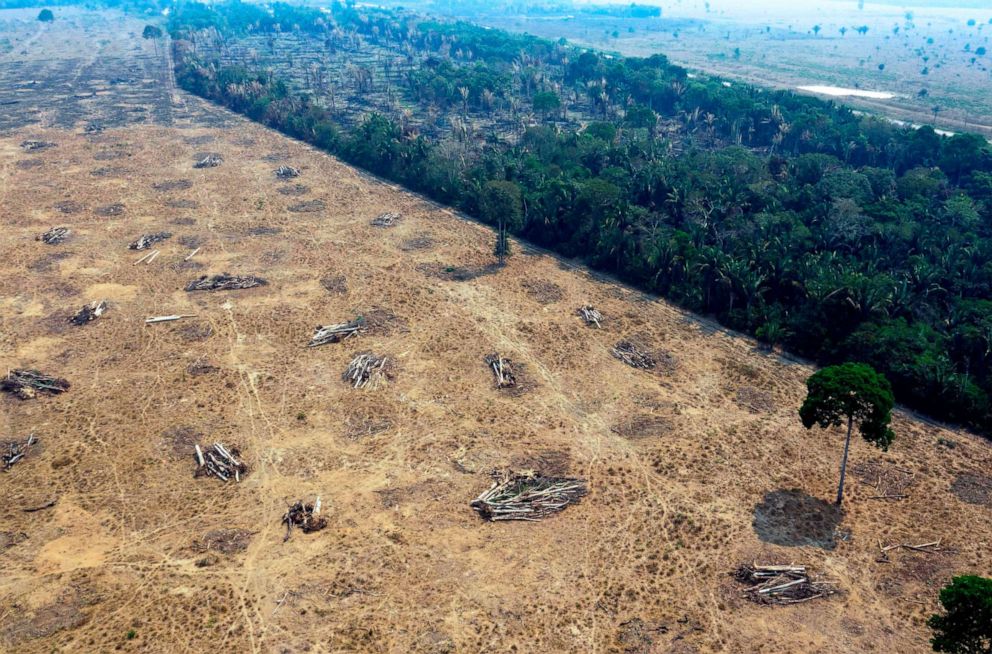
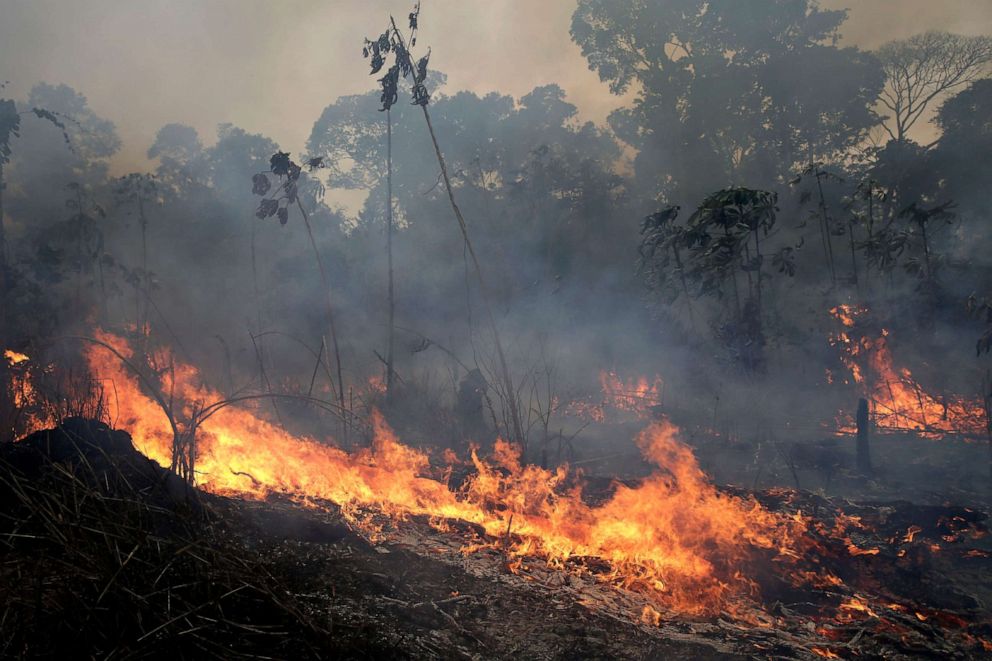
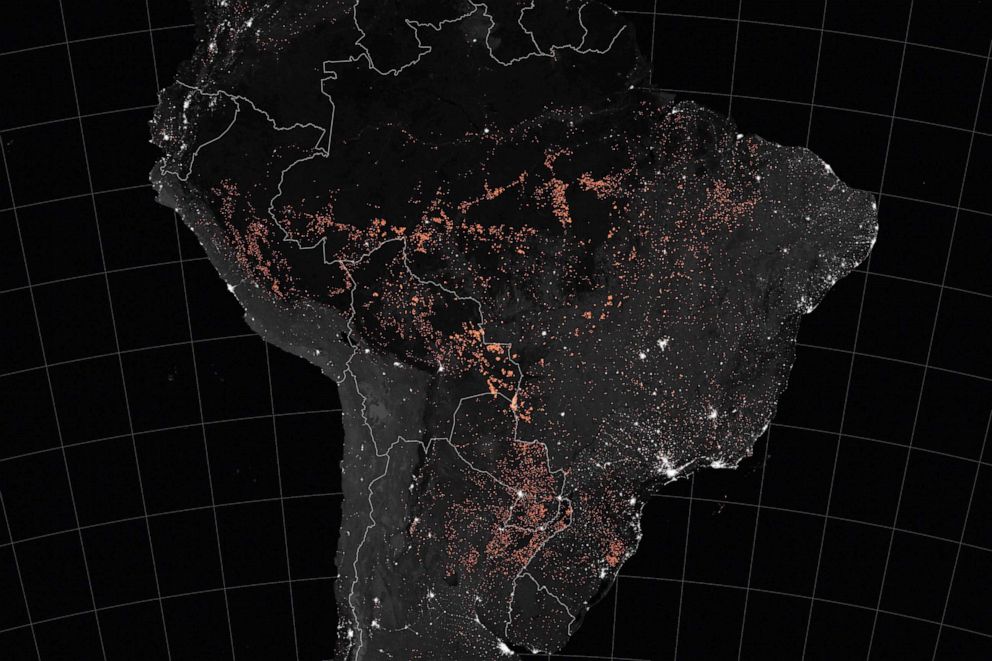
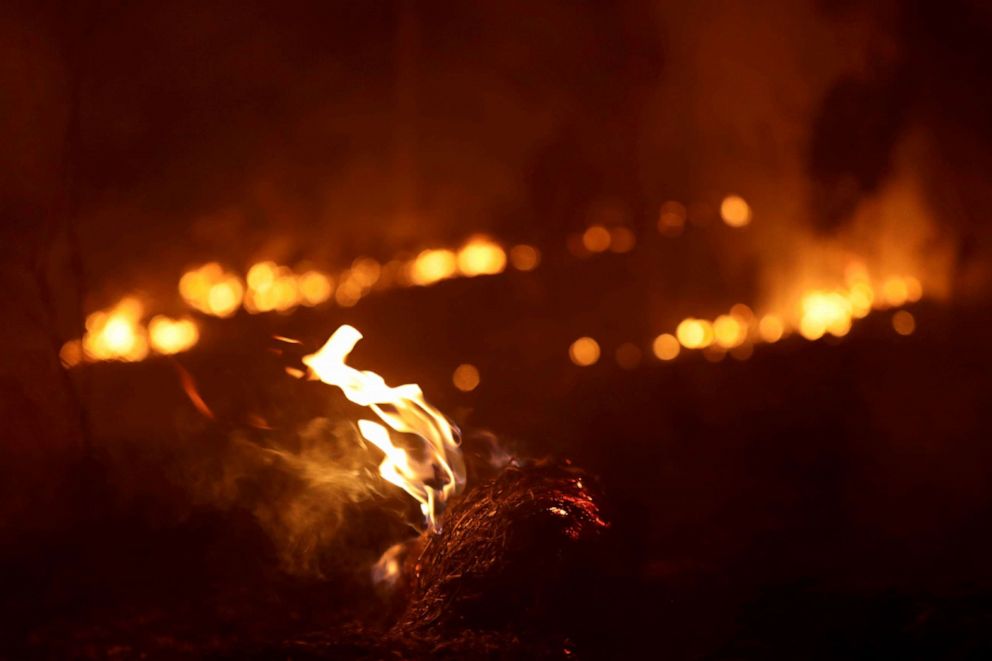
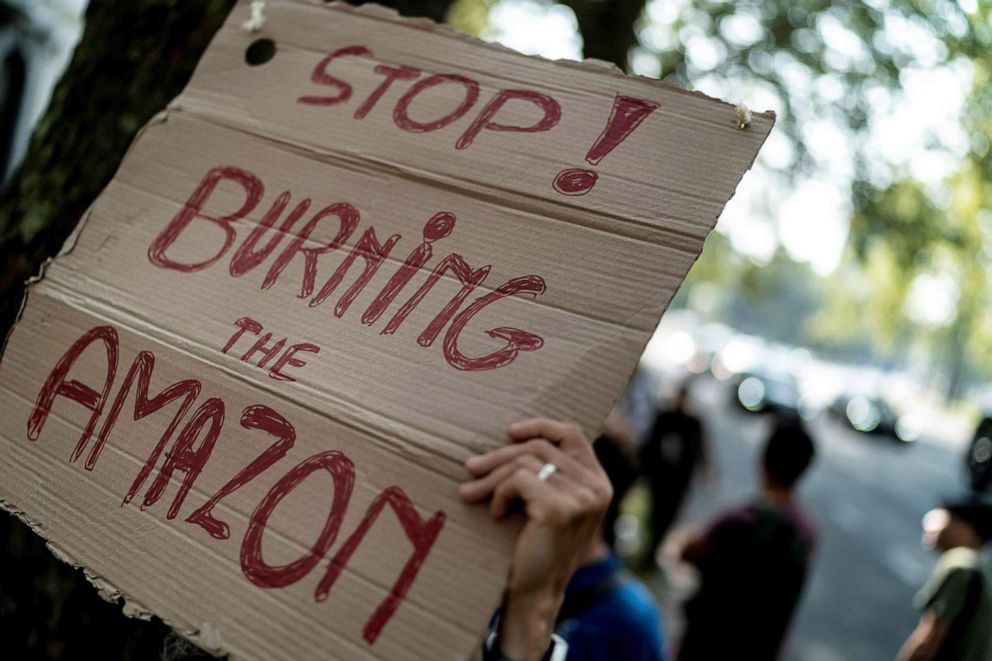
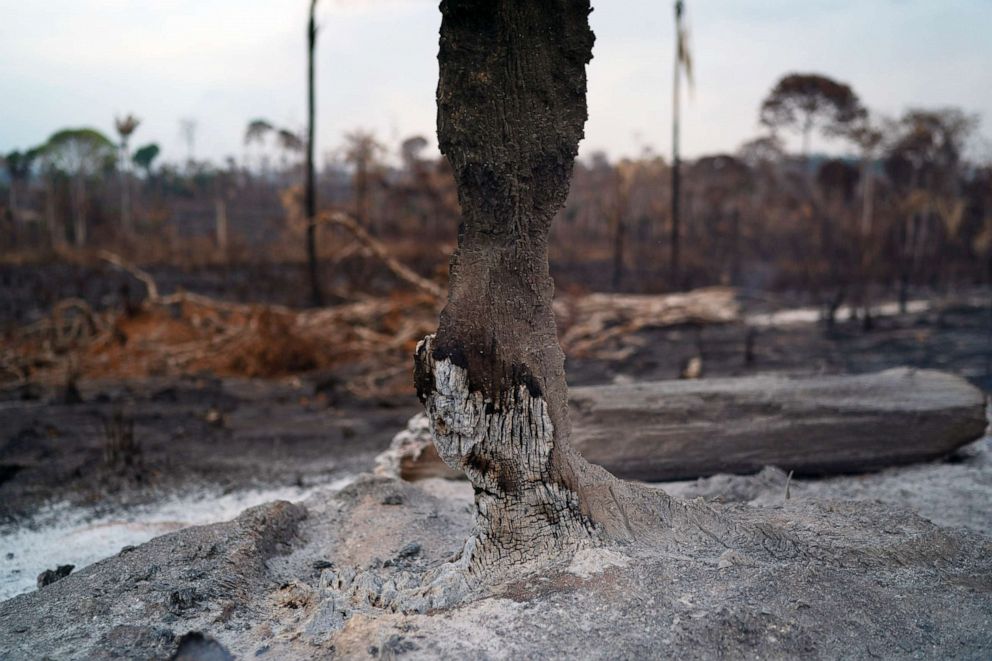
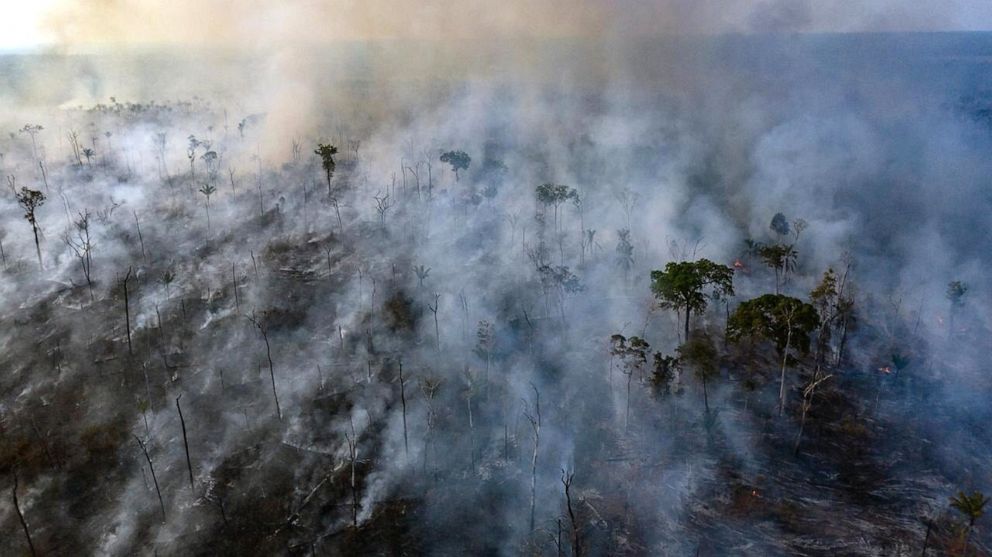
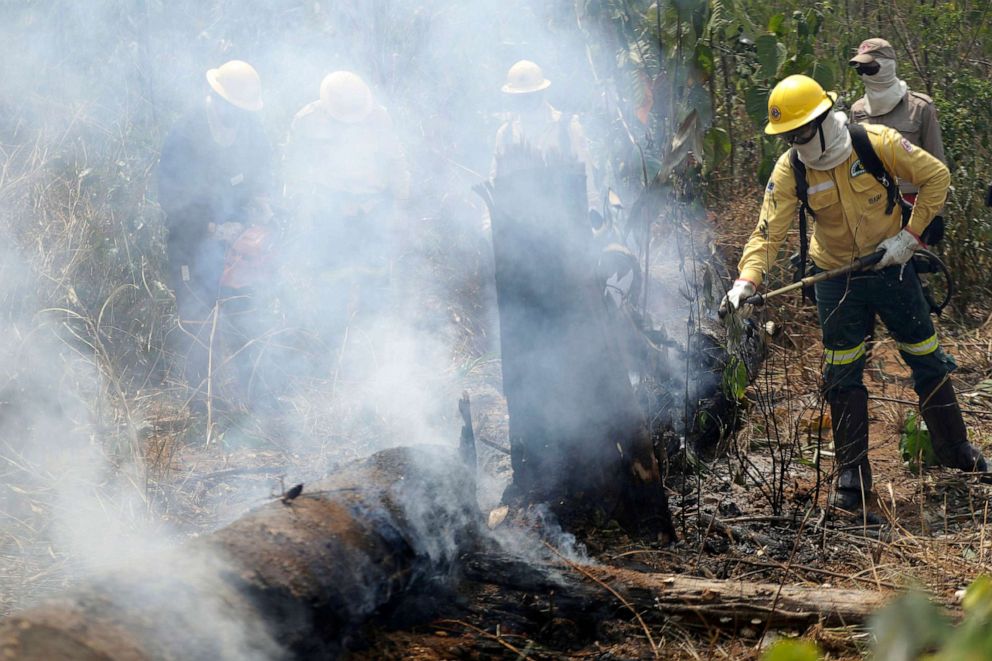
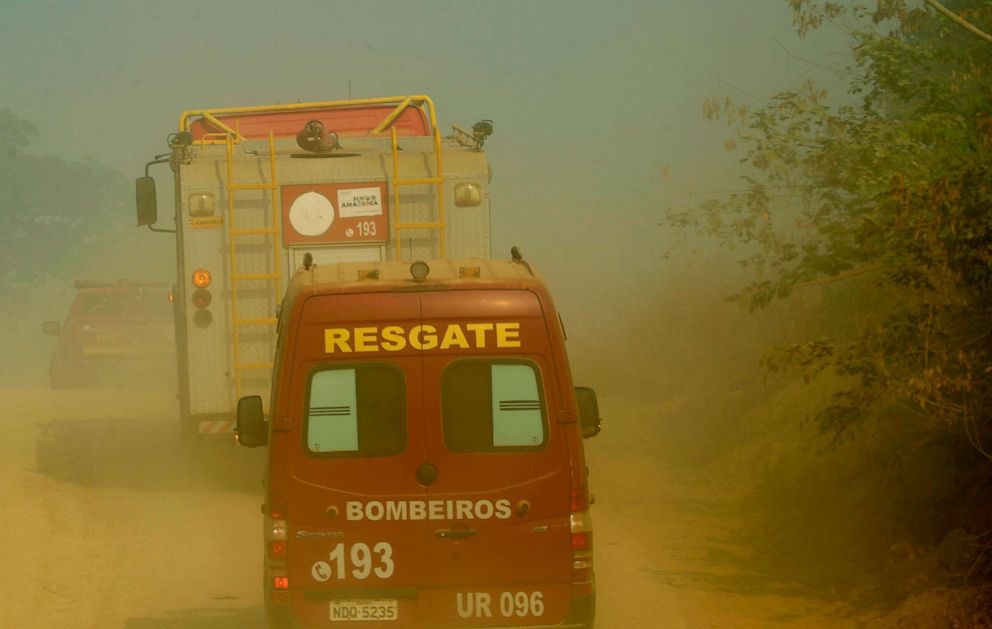
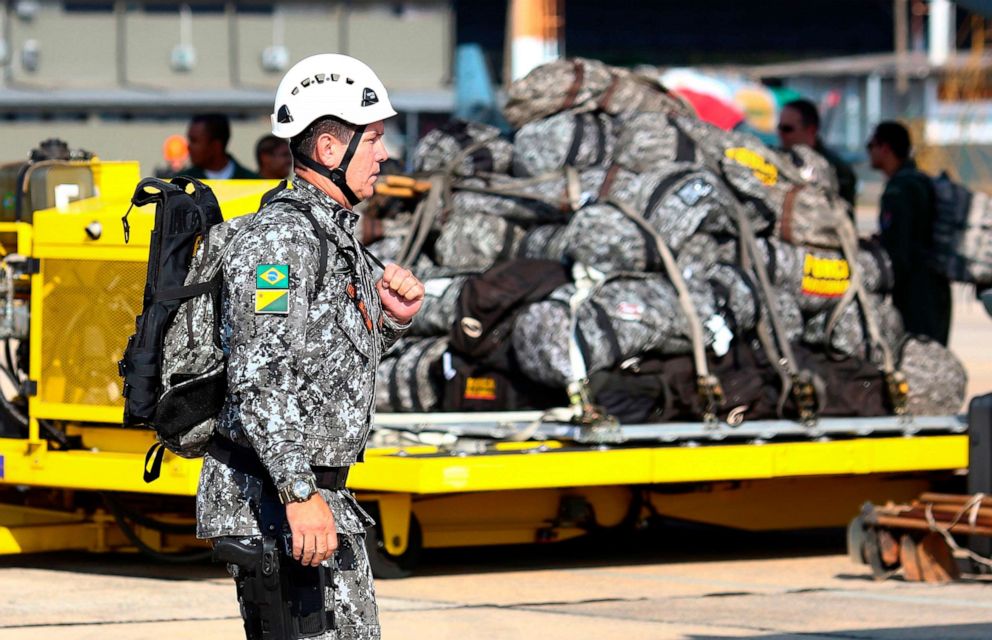
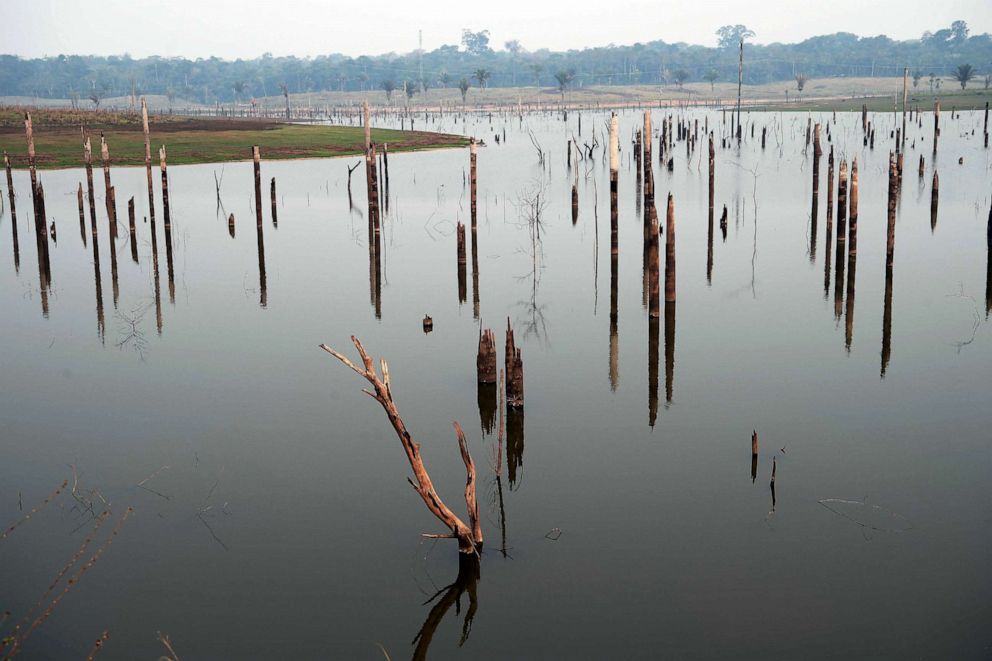
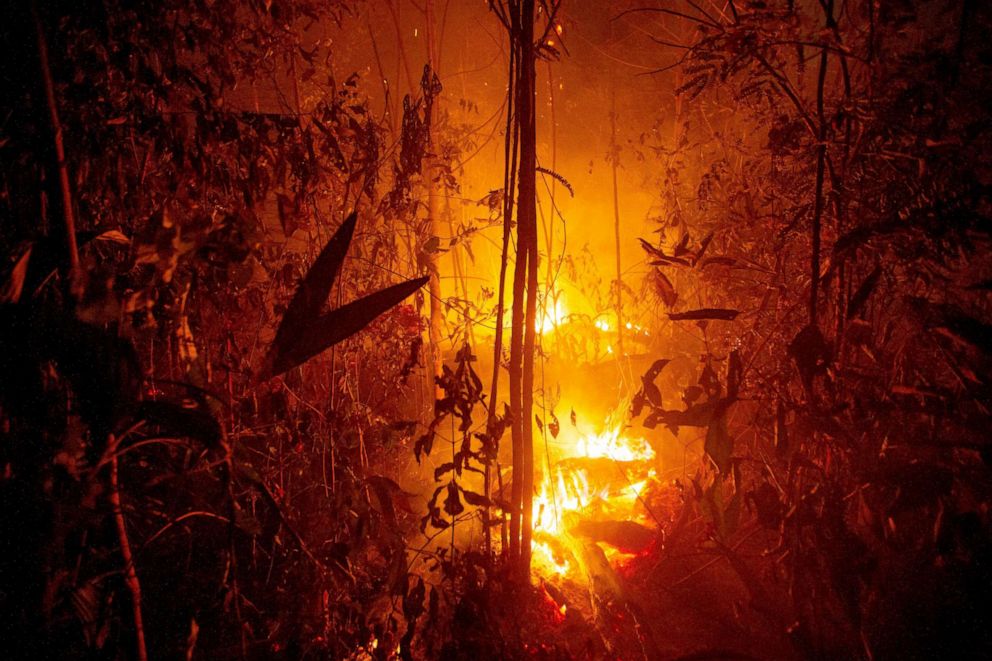
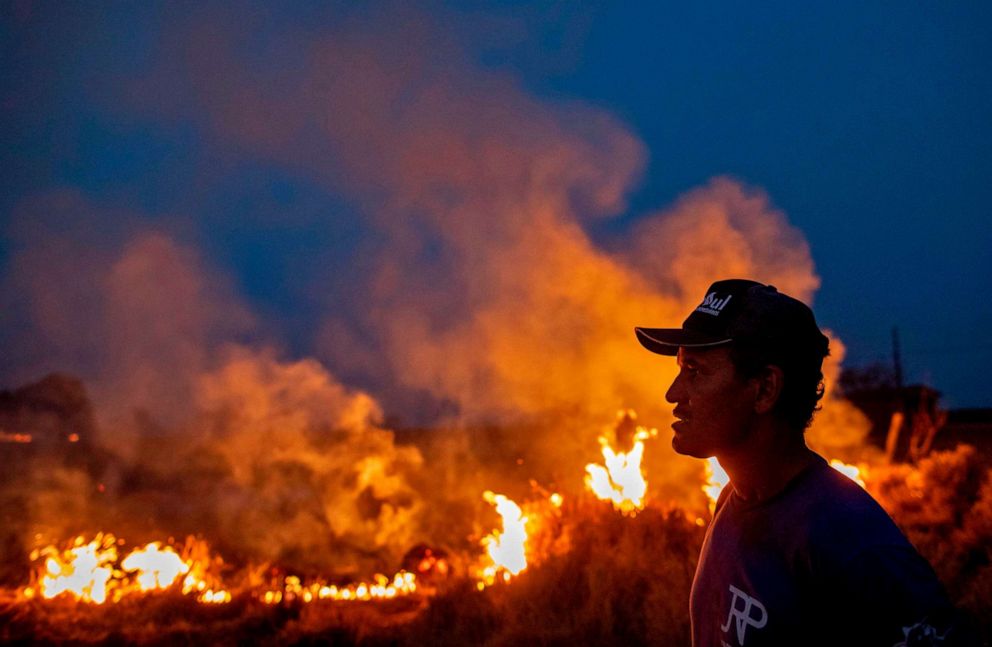
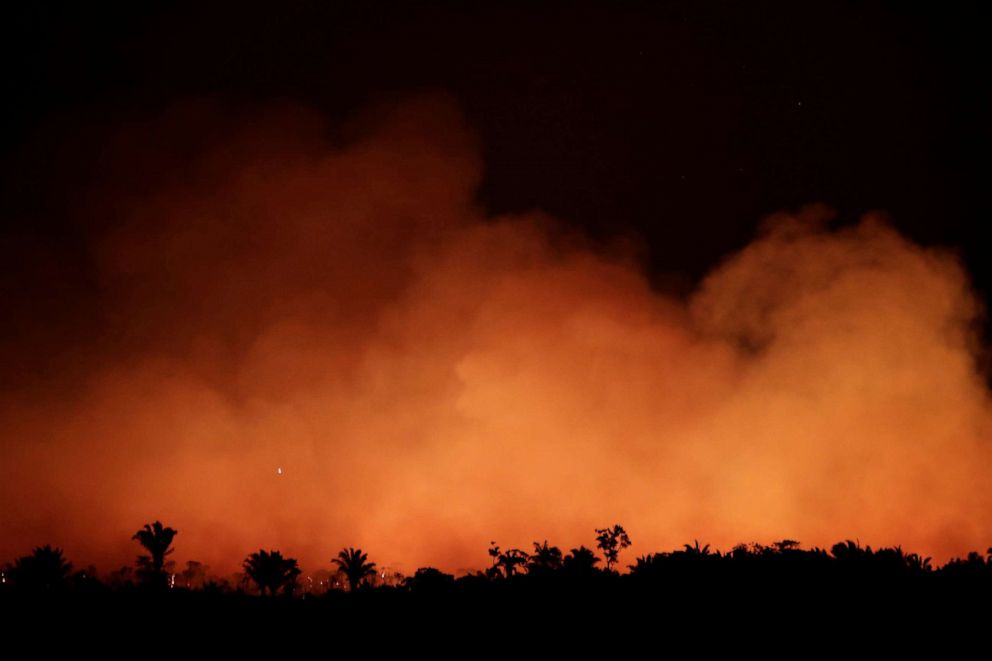
Farmers use fire to clear and maintain their land
Wildfires in Brazil occur every year when farmers illegally start them to either clear new land for farming and cattle ranching or to prevent new vegetation from sprouting, which is common in a tropical, humid climate, Rachel Garrett, environmental policy professor at the Swiss Federal Institute of Technology in Zurich, told ABC News.
The practice of using fire to clear land has been used for "thousands of years," Meg Lowman, National Geographic Explorer, director of the International Tree Foundation and rain forest biologist, told ABC News. More recently, it's been used to clear certain types of forests in California and even trigger the growth of certain types of trees in the Australian Outback, Lowman said.
The wildfires often begin when the flames sparked by fires escape, but the severity of them is typically determined by how dry the climate is, said Garrett, who specializes in conservation and agriculture in the Amazon.
The practice is common, enough so that signs are placed on highways in the country to remind farmers that they are not allowed to use fire, Garrett said.
"But, it's something that most farmers do, so it's not like it's coming out of the blue all of a sudden," she said.
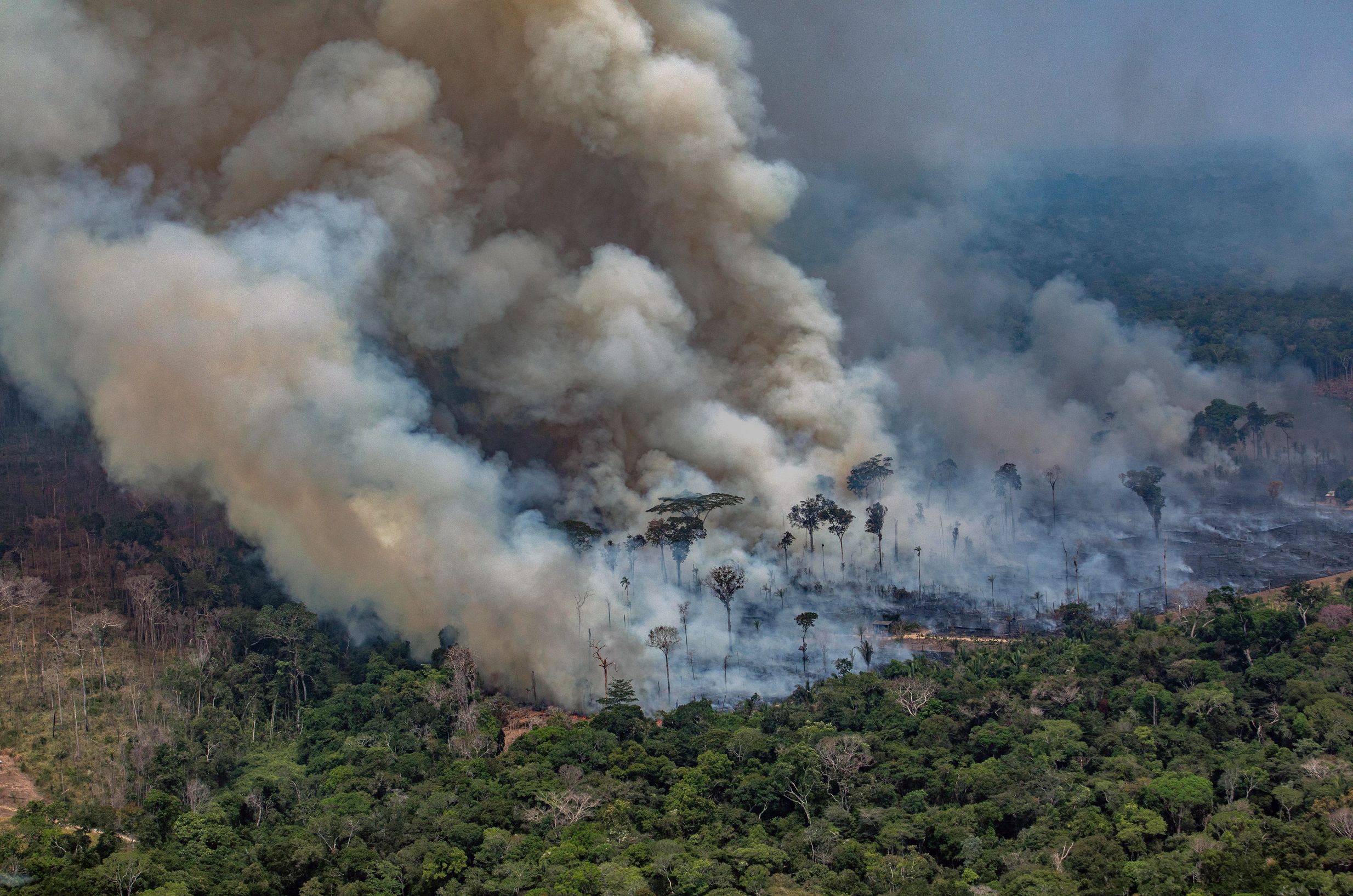
However, the experts cautioned people to not outright blame the farmers for the inferno destroying the rain forest.
Many local farmers are poor and lack alternative methods to manage the vegetation growth every year, Garrett said.
The farmers are likely "ill-prepared" for preventing fires from getting away and onto adjacent land, Lowman said. Since they are "already at risk" of escaped fires from their neighbors, it's too costly to invest "their very scarce amount of resources into something that's just gonna be burned anyway, because all their neighbors are already using fires," Garrett said.
The farmers are probably not thinking about long-term consequences, but are "thinking more about trying to get by," she said.
"I think it's important to step back and understand that a lot of these people are just trying to make a living," Garrett added.
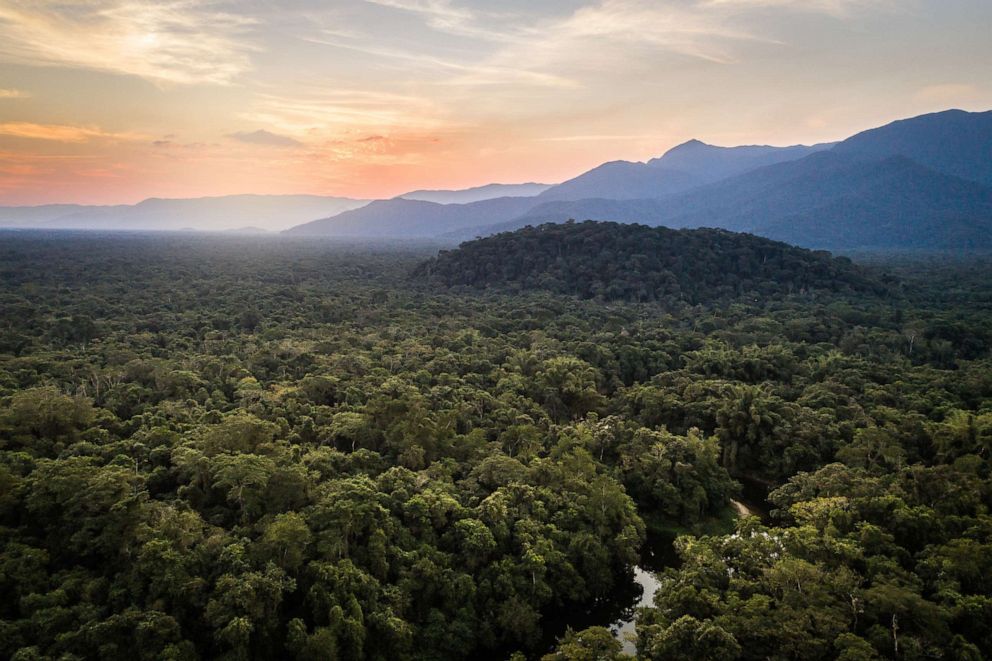
Brazil's climate is also becoming drier
The increased spread of fires may be partly explained by Brazil's drying climate, Garrett said.
The country's climate is changing "quite rapidly," teetering on hotter and drier conditions these days, Lowman said.
"That's a really dangerous tool when you're trying to use fire to manage your landscape, because it's easy to get out of hand when the rains aren't coming as extensively ... and dry seasons are hotter and drier," she said.
Lowman used the ecological concept called the "edge effect" to explain why. While a wet sponge may take all night sitting on a kitchen counter, that same sponge that is cut up into fragments could potentially dry out within an hour, since the edges are drier and more vulnerable due to the decrease in surface area.
The more the rain forest is depleted, the larger the risk, Lowman said.
"They're basically creating tinder for hotter and drier fires," she said.

The country's current political climate may be fanning the flames
The political rhetoric is actually encouraging farmers to spark them at an alarming rate, experts told ABC News.
Many Brazilians are blaming President Jair Bolsonaro, who was elected in January, and has called for a double-digit increase in deforestation, AP reported.
"There's reason to believe that [the fires] are going up, particularly, as a result of the election of Bolsonaro, because he has changed the rhetoric around Amazonian deforestation and emboldened farmers to not comply with regulations of fire usage and regulations," Garrett said.
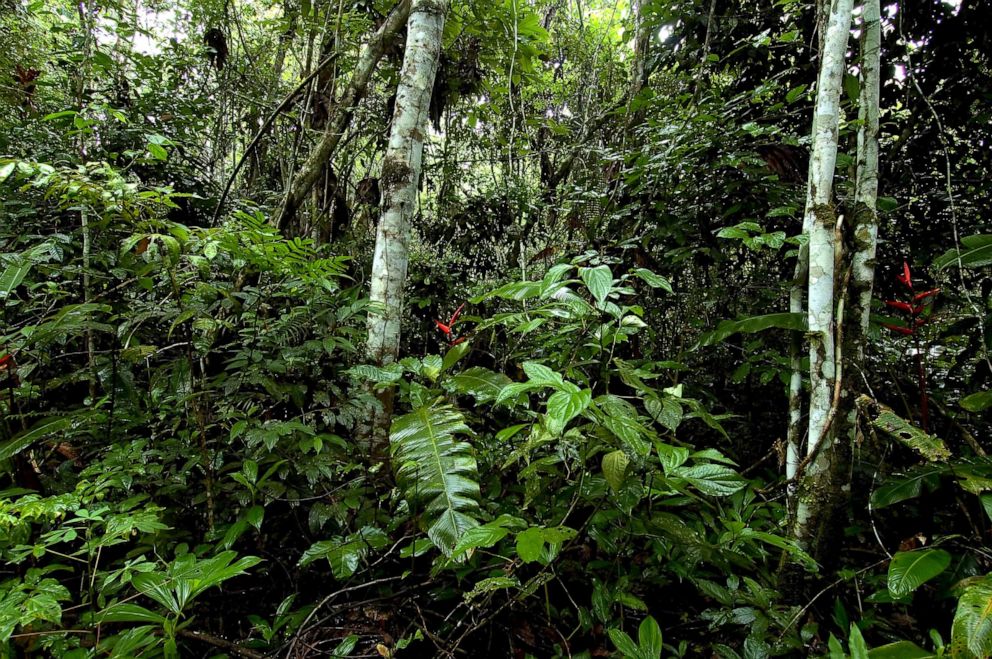
The pro-clearing policies are have "probably given people a few more matches in the tool kit," Lowman said.
To take it a step further, some groups of farmers may be intentionally starting fires "specifically to send a message to Bolsonaro," Garrett said.
"This is actually arson," Daniel Brindis, forest campaign director for Greenpeace USA, told ABC News, describing the scale at which the fires are being set as "incredible."
Brazilian media has reported that in the state of Para, which houses the Amazonia National Park, farmers were organizing "days of fire" by sparking flames on their properties to show Bolsonaro they agree with his message, both Garrett and Brindis said.
In addition, a reduction in the budget of Brazil's environmental ministry that enforces existing fire regulations and is also responsible to fighting wildfires on the ground has been slashed by Bolsonaro, Garrett said.
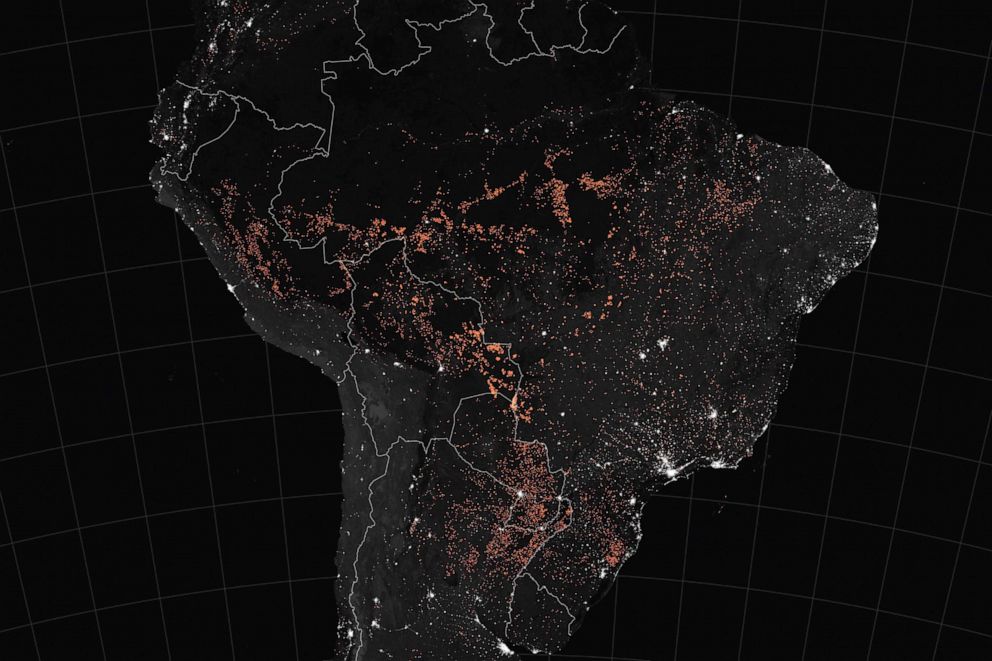
In past years, the agricultural lobby in Brazil has acknowledged the need to conserve the rain forest to protect the local micro climate, Garrett said, but "now the rhetoric is a bit different."
"It's perceived that more can be cleared and more can be legally cleared without there being harms," she said.
Last week, Bolsonaro suggested that nongovernmental organizations whose budgets have been cut could be responsible for setting fires to make him look bad, but did not cite any evidence, according to AP.
Bolsonaro announced Wednesday he would refuse international aid to help fight the fires unless French President Emmanuel Macron retracts comments he finds offensive, such as calling him a liar, AP reported.
What's at risk if the fires continue
While the fires are concentrated in Brazil, "the entire system" of the Amazon, which is also found in countries like Peru, Colombia, Ecuador, Bolivia and Venezuela, is at risk, Lowman said.
The Amazon rain forest is nicknamed the "Lungs of the World" for its ability to draw in greenhouse gases and carbon dioxide and produce oxygen through photosynthesis, Brindis said.
The old heritage trees within the rain forest store carbon "really well," Lowman said. If the fires reach a "point of no return," the forests could be replaced by fire-prone brush and savanna, according to the World Wildlife Fund.
"We're losing a valuable tool to fight against global warming and climate disruption," Brindis said.
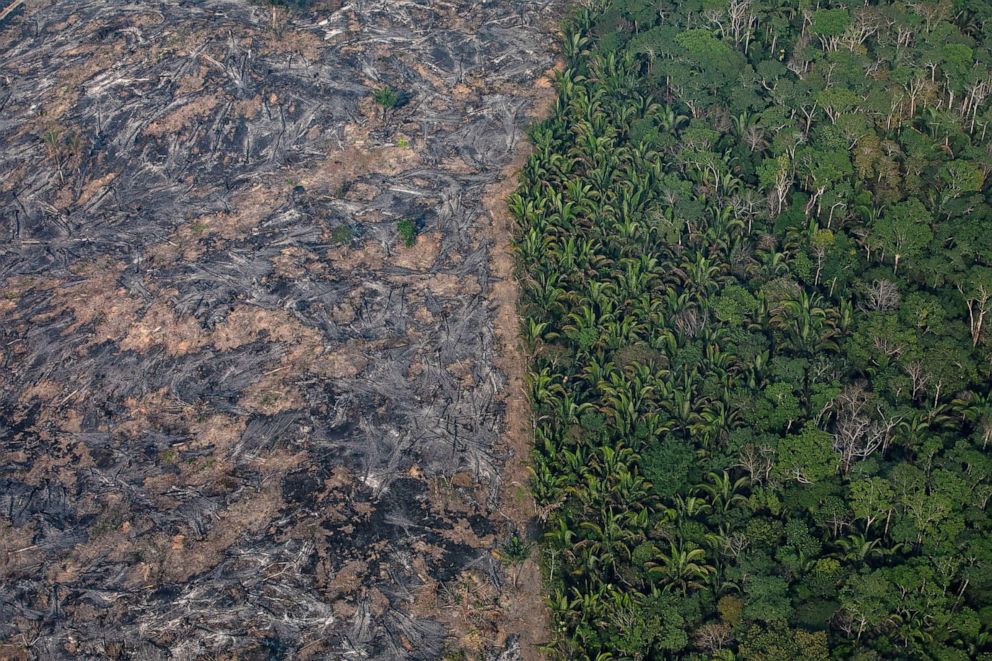
Lowman described the situation as "depressing" and "scary," saying she is most worried about the Amazon and its "reservoir of freshwater that has a huge impact on climate," such as ocean cycles, the atmosphere and even rain fall pattern in North America.
The Amazon rain forest is also thought to be home to half of the species of plants, animals and insects on the planet, Lowman said. Scientists estimate that about 50 million different species of invertebrates call rain forests around the world home, according to the Rain forest Action Network.
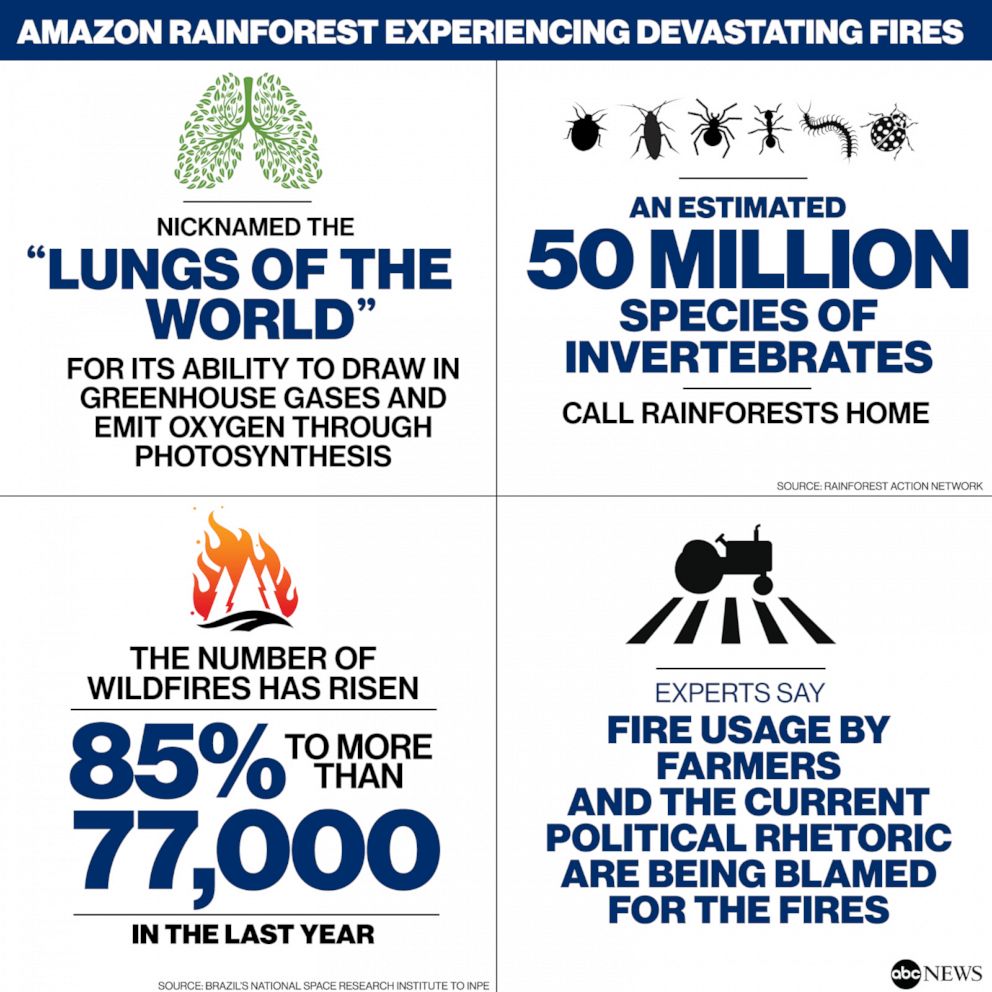
What's worse is there are still many species to be discovered, Lowman said, adding that advances such as a cure for cancer, resources for food and new fabrics and building materials could still be hiding in the canopies.
"We'd probably lose a lot of things we don't even know about," Lowman said.
Experts weigh in on how to save the rain forest
A "huge amount of responsibility" is on the American consumer to research the source of their products, such as soy, beef and several kinds of fruits and vegetables, Lowman said.
"It's so easy to blame Brazil or blame the farmers, but they're making a living because we are buying their products," she said.
Consumers should refuse to buy goods that were produced on agricultural land that was converted from rain forest, Lowman said.
"All the cattle producing, leather, meat, all of the animal feed, is really made to export abroad," Brindis said.
"It’s really up to the international community to demand that the global economy end deforestation, as well as the Brazilian government."
In addition, Lowman believes "the whole world" should contribute funds as a way of sharing the Amazon, adding that it's "pretty hard to ask the indigenous people to put a glass bubble over their environment."
Lowman said it may fall onto an international group to broker "a way for all of us to share its fate."
Radical policy changes will need to be made to stop the rate of deforestation from continuing, which will likely occur long after "traumatic wave of fires" has subsided, Brindis said.
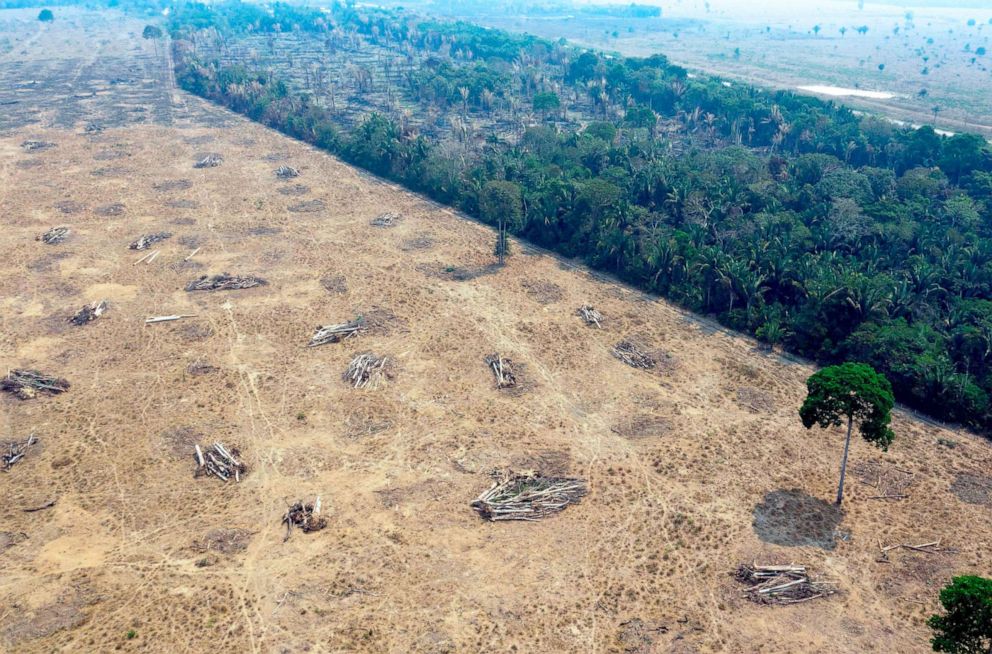
The Brazilian government needs to begin enforcing, rather than weakening, environmental laws and increase protected areas, Brindis said. Bolsonaro, however, has said that rather than increase protected areas, he plans to open them up for mining and other "destructive activities." Brindis said.
In addition, traveling to the rain forest and supporting industries that encourage the conservation of the land is another way to offer support, Lowman said.
"I just think it’s really important for people to understand that just because they can’t see the Amazon doesn’t mean it isn’t critical to the health of their own lives where they live," Lowman said. "It’s the big machine that runs our planet."






